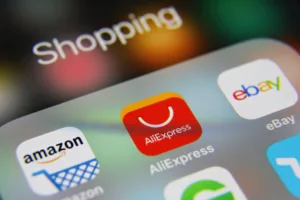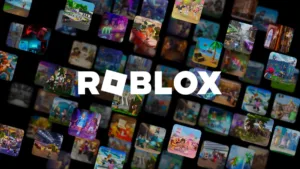By Sandra Schneider, Senior Director Growth Partnerships Apps, Unity
Mobile gaming has grown tremendously since the App Store launched in 2008. During this time, mobile games have written the playbook for how to successfully and effectively scale an app-based business, and drive strong, sustainable revenue growth. In recent years, many apps, which were traditionally built on a premium subscription model or monetised through interstitials, native and banner ads, have been incorporating elements from the gaming playbook in order to monetise a wider percentage of their audience and scale their growth.
The growth loop for mobile games
There have been a few elements that have been key to the growth of mobile gaming, including a lot of innovation around creative formats, and investment in automations across multiple areas of growth operations. One element that has been particularly crucial to the exponential growth of the gaming category has been their focus on the growth loop, which deeply links marketing and monetisation activities through centralised platforms. This link resulted in data insights and automated optimisations, which then created a flywheel of growth to enable a scalable business model. Here are some key takeaways for apps from both sides of the growth loop:
Key takeaways for marketing:
- Diversify your channel mix
To reach new audiences cost-effectively it’s important to expand your UA to channels beyond the standard options of social or search, which are often the default channels for many apps. Not only does doing this help you tap into a wider audience, it increases the resilience of your business and your growth model if your UA activities are spread across multiple channels. For example, SDK networks may be slightly more expensive than social channels but they offer access to new and high-quality users if managed correctly. Other popular channels are Apple Search Ads (Apple’s ad placements through the App Store) or on-device ads (which connects app advertisers with device owners through partnerships with premium manufacturers and carriers at moments when they are highly engaged).
- Optimise creative strategy
In an industry where UA is heavily automated, creatives are one of the last levers marketers can ‘pull’ to gain an edge in their UA campaigns. According to our data, the number of creatives tested per month per mobile game can reach into the hundreds. Scale and speed in creative production is hugely important if you want to test enough options to find a winning creative. Many mobile games use tools that both help speed up creative production, and automate creative testing and optimisation to a very granular level.
Key takeaways for monetisation:
- Diversify revenue streams
Analysis of our data at Unity shows that only 2-7% of people who download a mobile game will convert to become a paying user, and, of those, 75% will convert by day 25. In order to ensure they are monetising the rest, mobile games have nailed sophisticated ad monetisation strategies which include segmenting players and offering them an ad experience tailored to their engagement with the game.
This is a learning for every app in every category – analyse your data to understand how long it takes for users to convert to first purchase, and once the curve flattens consider adding ads to your non-paying users. Analyse and test which ad units, especially those not traditionally used in apps, can be cleverly implemented to monetise the rest of your audience without cannibalising any future potential IAP.
- Increase retention and engagement with rewarded ads
A common misconception is that ads harm the user experience and ultimately cause churn. Mobile games have shown that some ad formats, together with a sophisticated implementation, can actually improve retention, increase session length, and encourage users to login to the app more frequently. User-initiated ad units like rewarded ads – where users choose to watch a video in exchange for receiving an in-app reward – is one such format.
For apps that don’t have a virtual currency, there are many ways to easily create small rewards from the app’s existing content, in order to implement rewarded ads and reap the benefits.
The goal is for users to watch ads to earn credits which can then unlock rewards. Work out how you will create your virtual economy (i.e. credits or coins), and then offer content (i.e. rewards) that users can use their currency on.
As opposed to games where virtual economies are driven by a player’s desire for more content (be this functional or cosmetic), in apps functional content is the main driver for motivating users. So, to create your virtual economy, break down your paid functional features and determine what a user may pay for one ‘unit’ of that feature. For example, if you’re a music app maybe it’s two rewarded ads for an additional free skip, or if you’re a dating app it’s once rewarded ad to see who ‘liked’ your profile. Rewarded ads don’t just add to the app’s bottom line, they also act like a free trial of the paid content, helping drive subscriptions.









